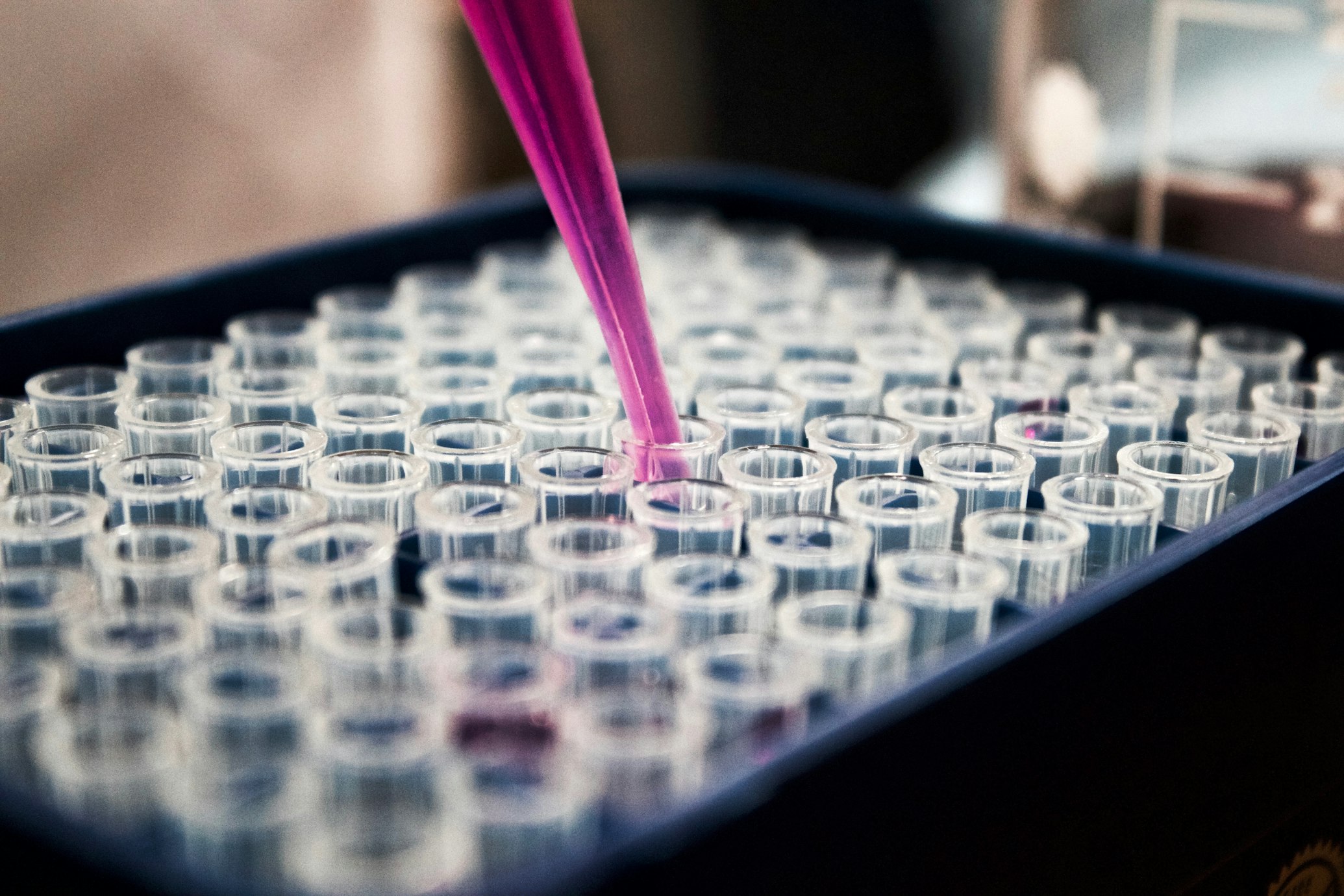The Silent Architects
How Room-Temperature Ionic Liquids Are Revolutionizing Material Design
Exploring the frontier of green chemistry and advanced materials
Article Navigation
Introduction: The Green Solvents Rewriting Chemistry's Rules
Imagine a liquid that never evaporates, carries electricity like a metal, and can be tailored atom-by-atom for specific tasks. This isn't science fiction—it's the reality of room-temperature ionic liquids (RTILs). These molten salts, liquid below 100°C, are transforming interfacial polymerization (IP), a process critical for making everything from water-purifying membranes to protective nanocoatings.


1. Ionic Liquids & Interfacial Polymerization: A Molecular Dance
What Are RTILs?
RTILs are organic salts—typically pairing bulky, asymmetric cations (like imidazolium or pyrrolidinium) with flexible anions (e.g., bis(trifluoromethylsulfonyl)imide [TFSI⁻] or chloride [Cl⁻]). Their structure prevents crystallization, keeping them liquid at room temperature.
Common RTIL Structures

Interfacial Polymerization Demystified
IP is a reaction at the boundary of two immiscible liquids (e.g., water and hexane). When monomers from each phase meet, they form a polymer film—like the polyamide "skin" in water-filtration membranes.
Traditional IP Limitations
RTILs enter as precision directors. Their ions organize monomers at the interface, guiding smoother, more ordered polymerization. This transforms chaotic reactions into molecular choreography 1 4 5 .
2. Spotlight Experiment: Engineering Acid-Resistant Nanofiltration Membranes
To illustrate RTILs' power, we dissect a landmark study creating ultra-durable filters for acidic industrial waste 4 .
Objective
Synthesize nanofiltration (NF) membranes stable in strong acids (pH <2) to recover rare-earth metals from mining effluents—a task that destroys conventional polyamide membranes.
Methodology: Step-by-Step
Solution Preparation
- Aqueous phase: Branched polyethylenimine (PEI) + 1-aminopropyl-3-methylimidazolium chloride ([AEMIm][Cl] RTIL)
- Organic phase: Cyanuric chloride (CC) in hexane
Interfacial Polymerization
- A porous polysulfone support is immersed in the PEI-RTIL solution
- After drying, it's exposed to CC/hexane
- PEI and CC react, forming a poly(s-triazine-amine) film
- RTILs create "diffusion channels", aligning PEI for uniform bonding with CC
Characterization
- SEM/AFM: Surface morphology and roughness
- Molecular Dynamics (MD): Simulated IL-PEI interactions
- Performance tests: Water permeance and rare-earth ion rejection in pH=1.5 solution
Results: Breaking Boundaries
- Enhanced Permeance: RTIL-modified membranes achieved 11.4 L·m⁻²·h⁻¹·bar⁻¹—36% higher than controls
- Acid Stability: After 7 days in pH=1.5, RTIL membranes retained >95% Y³⁺/La³⁺ rejection vs. 40% drop in standard membranes
- Smoother Surfaces: AFM showed roughness reduced by 25%, minimizing fouling
Table 1: Performance Comparison 4
| Membrane Type | Water Permeance (L·m⁻²·h⁻¹·bar⁻¹) | Y³⁺ Rejection (%) | Stability (pH=1.5, 7 days) |
|---|---|---|---|
| Standard PEI-CC | 8.4 | 93.1 | Rejection drops to 53% |
| [AEMIm][Cl]-PEI-CC | 11.4 | 96.8 | Rejection >95% |
Table 2: Surface Topography 4
| Parameter | Standard PEI-CC | [AEMIm][Cl]-PEI-CC |
|---|---|---|
| Roughness (Ra, nm) | 5.32 | 3.98 |
| Pore Size (nm) | 0.82 | 0.68 |
| Porosity (%) | 12.1 | 16.3 |
Why This Matters
The RTIL acted as a "molecular template":
- Its imidazolium head attracted PEI, creating ordered aqueous-phase channels
- Amino groups accelerated PEI diffusion to the interface, boosting reaction efficiency
- The stable s-triazine rings (from CC) resisted acid hydrolysis 4
3. Beyond Filtration: RTILs' Expanding Universe
RTILs' IP applications extend far beyond membranes:
Nanostructured Coatings
Anticorrosive Layers: RTILs like [BMIM][PF₆] form porous polyurea films on steel, trapping inhibitors that self-heal scratches. Coated particles show 10× longer lifespan in saline environments 1 .
Energy Materials
Solid-State Batteries: RTILs ([EMIM][TFSI]) reduce interfacial resistance in Li-ion batteries by 60%, enabling faster charging. Their non-flammability prevents thermal runaway 3 .
4. The Scientist's Toolkit: Essential Reagents for RTIL-Enhanced IP
Table 3: Key Materials for RTIL-Interfacial Polymerization
| Reagent/Material | Function | Example in Use |
|---|---|---|
| Imidazolium RTILs | Direct monomer assembly; reduce interfacial tension | [AEMIm][Cl] for NF membranes 4 |
| Cyanuric Chloride (CC) | Acid-resistant monomer; forms stable s-triazine rings | Rare-earth recovery membranes 4 |
| Polyethylenimine (PEI) | Branched amine monomer; creates dense, selective layers | Nanofiltration 4 |
| Trimesoyl Chloride (TMC) | Standard cross-linker for polyamide films | RO membranes 5 |
| 1-Alkyl-3-methylimidazolium ILs | Surfactant-like agents; align monomers at interface | EMIC/BMIC/OMIC for RO films 5 |
Common RTIL Cations

Common RTIL Anions

5. The Future: Smarter Liquids, Smarter Materials
RTIL-driven IP is entering an era of atomic precision:
1 Encapsulated ILs
Microcapsules with RTIL cores (<1 µm) enable "on-demand" release for self-healing coatings or carbon capture .
2 Biomimetic Designs
IL-polymer brushes replicate pitcher plant surfaces, creating anti-biofouling ship hulls 2 .
3 AI-Accelerated Discovery
Machine learning predicts optimal cation-anion pairs for target polymers, slashing trial-and-error 3 .
RTIL Research Growth (2000-2023)

Conclusion: The Liquid Revolution
Room-temperature ionic liquids are more than just "green solvents"—they are master architects at the molecular scale. By bringing order to interfacial chaos, they enable materials that defy extremes: filtering acid without degrading, storing energy without igniting, and healing themselves without intervention.
As we decode their secrets, RTILs promise not just better membranes or coatings, but a fundamental leap in how we build the material world.
For scientists and engineers, the message is clear: the future of materials isn't just solid—it's liquid.